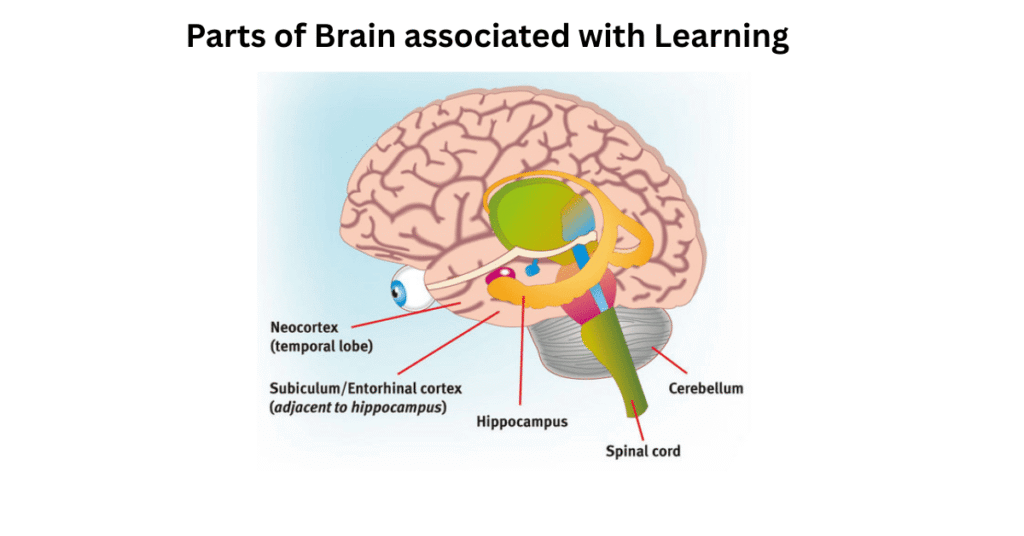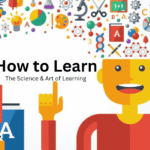
How to Learn: The Science & Art of Learning
Learning is a skill, a science, and an art. Do you want to know how to learn better, faster, and more effectively? This guide decodes the concept of learning and memory. Learning could be fun if you know how to learn. Master the right techniques. Stop cramming and start reading, understanding, and memorizing the smart way.
Table Of Content
- Common Myths About Learning
- What is Learning?
- The Art of Active Reading
- Neuroscience of Learning and Memory
- Stages of Memory Formation
- Key Takeaways for Sharp Memory
- Step-by-Step Guide for Better Learning
- Some Practical Study Tips for effective Learning
- A Healthy Mind Resides in a Healthy Body
- Conclusion: Learning is Continuous Growth
Common Myths About Learning
Do you find it hard to master subjects? Many of us struggle, leading us to doubt our brain’s potential. We begin to believe that I can never master this subject or learn this topic. This is often because we were taught what to learn, but never how to learn.
Learning to learn should be the first lesson in any school. Once you master this art of learning, acquiring new knowledge & skills becomes faster and easier, boosting your personal growth at any age.
What is Learning?
Learning is the process of acquiring new Knowledge, Skills, and Attitude. This process has two main components:
- Acquisition of New Knowledge & Skills: Gained by Reading, Listening, Observing, and Doing.
- Storage, Retention, and Timely Recall: The brain’s function of holding and retrieving the newly acquired information.
To achieve effective learning, we must crack the code of Reading and Memorizing.
The Art of Active Reading
Effective reading is an art that requires active learning. Follow these steps to improve your reading comprehension and retention:
- Set Clear Goals: Define exactly what you will read and why.
- Minimize Distractions: Find a quiet space and be intentional about acquiring new knowledge.
- Cursive Reading (First Pass): Read quickly to get the broad context.
- In-Depth Reading (Second Pass): Reread with intent to grasp finer points. Engage multiple senses.
- Highlight and Annotate: Use markers to highlight key points. These actions signal importance to your brain, improving information storage.
- Use Pomodoro Technique: Read for 25 minutes, then take a 5-minute break. This segmented approach helps your brain better store information and maintain high focus.
Neuroscience of Learning and Memory
To learn better, we must understand the neuroscience of learning. Your brain is composed of billions of Neurons connected by Synapses, which transmit information.
Key brain parts for Learning and Memory:
- Entorhinal Cortex: Where new information initially enters the brain.
- Hippocampus: Where memory formation takes place (short-term memory).
- Neocortex: Where long-term memory is stored.

Stages of Memory Formation:
- Encoding: Information from all senses enters the brain.
- Consolidation: The Hippocampus filters and associates pieces of information we actively paid attention to, creating new neural connections (the actual memory).
- Storage: New connections are stored in the Hippocampus and the Neocortex.
- Retrieval: Recalling memory by activating these established neural connections.
Key Takeaways for Sharp Memory:
- Focus and Attention: Your level of attention is key.
- Association: New information is retained better if you associate it with something you already know.
- Stability: Learning is defined by the stability of your Neural connections.
- Activation: Regular activation (recall) strengthens these connections, leading to deeper and more reliable memory retrieval.
Step-by-Step Guide for Better Learning
Use this definitive guide to master the science of learning:
- Preparation: Find a quiet, distraction-free space. Adopt Active Learning.
- Goal Setting & Reward: Set a clear, specific goals for the session (e.g to complete a chapter or certain no. of pages ) and promise yourself a small reward for completion.
- Mindfulness: Start with a few deep breaths and mindfulness to prepare your mind and refocus when it wanders.
- Positive Mindset: Use positive affirmations and visualization. Imagine yourself fully understanding the material and successfully answering questions , impressing your teacher and friends.
- Active Learning Techniques:
- Associate new information with existing knowledge.
- Use Visualisation, Pictures, Mind Mapping, Mnemonics, and Chunking for better memory retention.
- Regular Meditation: Meditation enhances your Focus, Attention span, strengthens neural connections, and improves memory power.
Some Practical Study Tips for effective Learning
- Pomodoro Method: Study for 25 minutes, then take a 5-minute break.
- Interleaving: Change the subject or topic after one or two Pomodoro sessions.
- Self-Testing: Quiz yourself at the end of each session. This strengthens neural connections for long-term memory.
- Spaced Repetition: Revisit or actively recall the topic after a gap of a few days.
- Feynman Technique: Try to explain the topic simply to someone else. This exposes knowledge gaps, allowing you to consolidate your learning.
- Routine: Maintain a fixed study schedule and location. Your brain loves routine.
A Healthy Mind Resides in a Healthy Body
Your Body & Mind are interconnected. Healthy habits are crucial for optimal brain function and a sharp mind:
- Sleep: Essential for the brain. 8 hours of sleep per day is desirable for optimal function and plays a key role in converting short-term memory into long-term memory.
- Exercise: 150 minutes of mild exercise per week boosts blood supply to the brain, improving Attention span, Focus, and Memory power.
- Diet: Boost brain function with foods rich in Omega 3 fatty acids and antioxidants (leafy greens, berries, nuts).
Conclusion: Learning is Continuous Growth
Your brain is Neuroplastic. It has the ability to form new neural connections throughout your entire life. Continuous learning is a must for everyone. You can learn anything by adopting the proper methods and techniques.
No subject is too hard to learn. The only thing that limits learning is a limiting belief. Learning should be seen as fun, not a burden. Master how to learn today!


